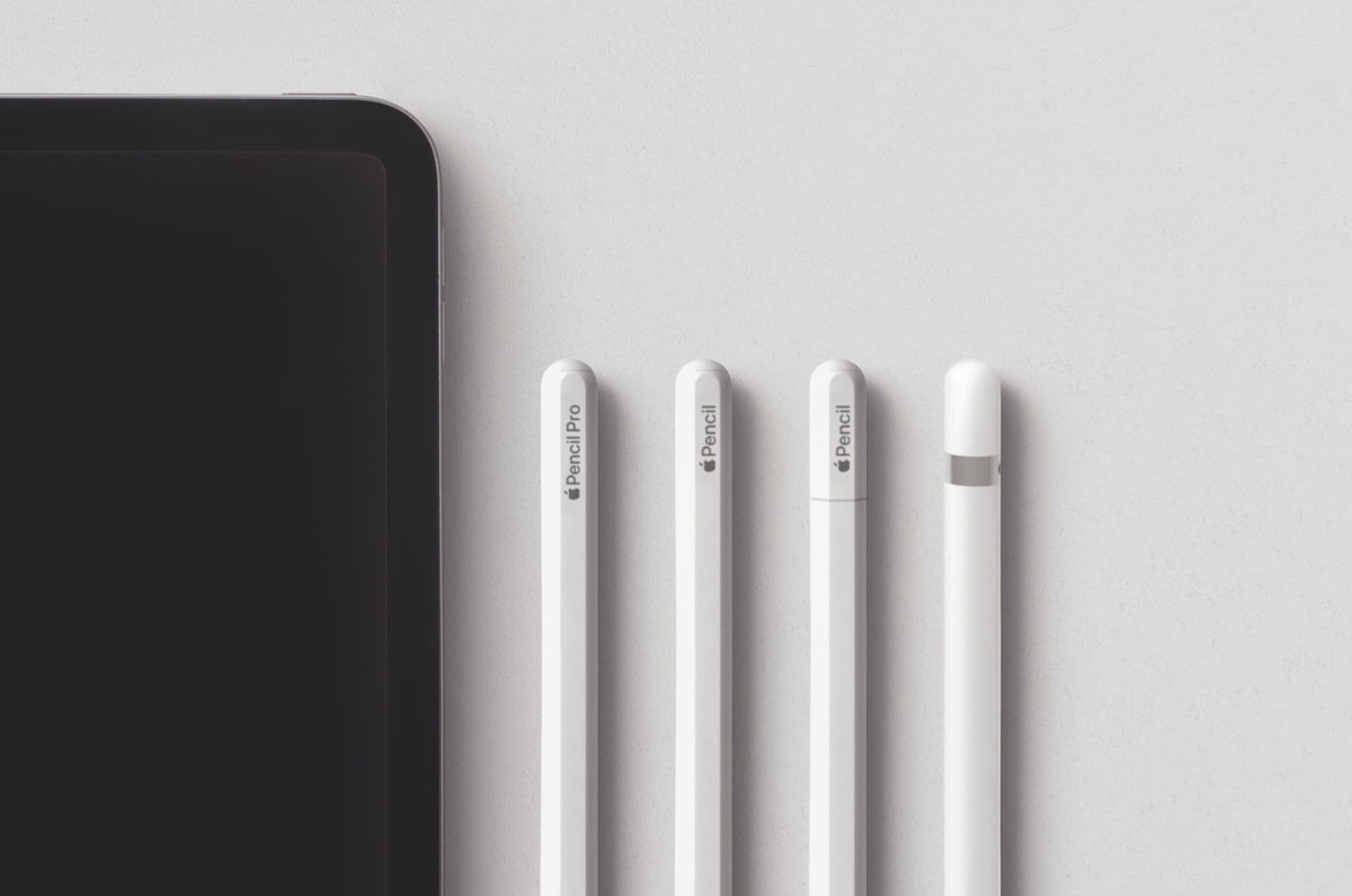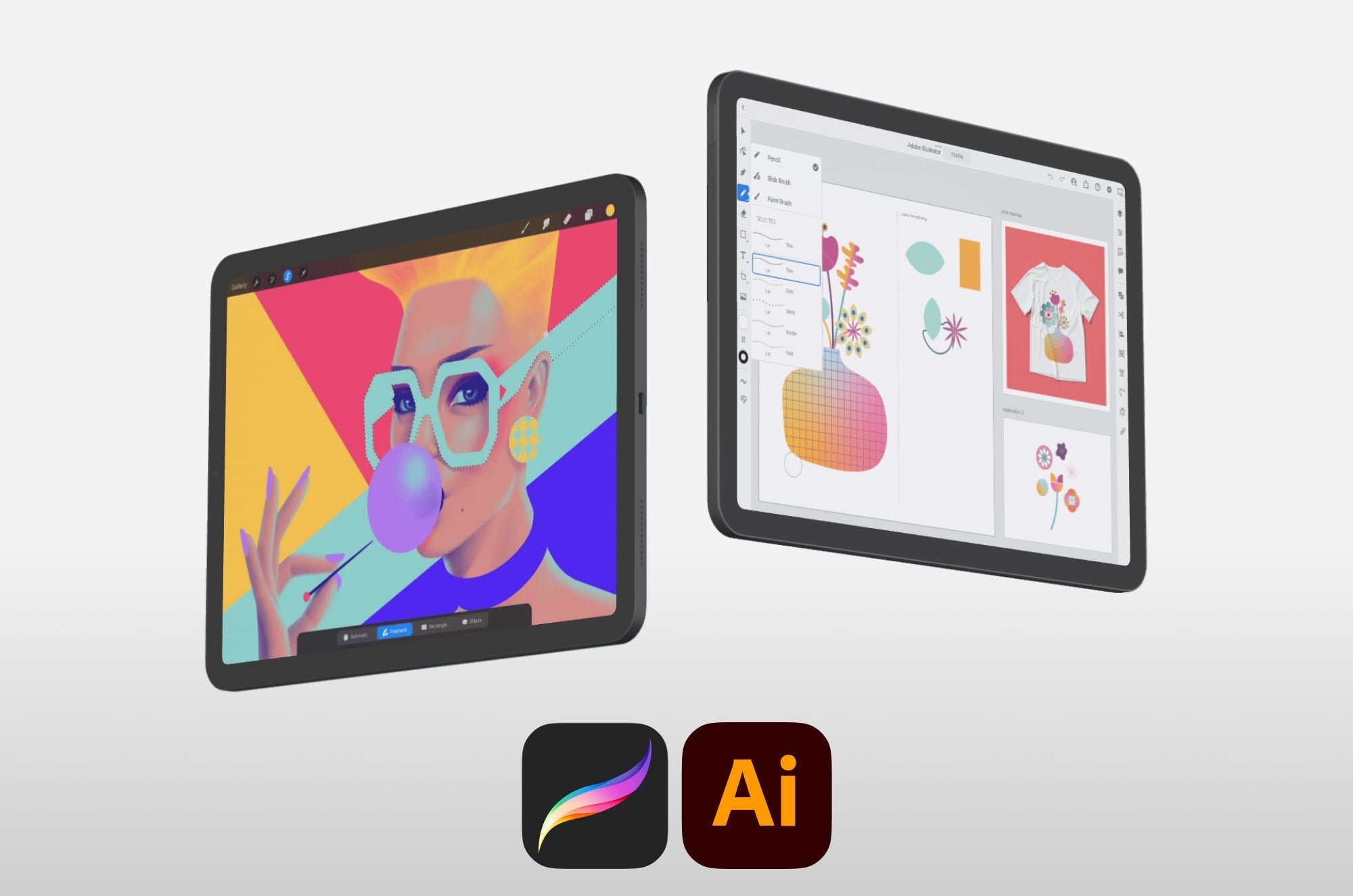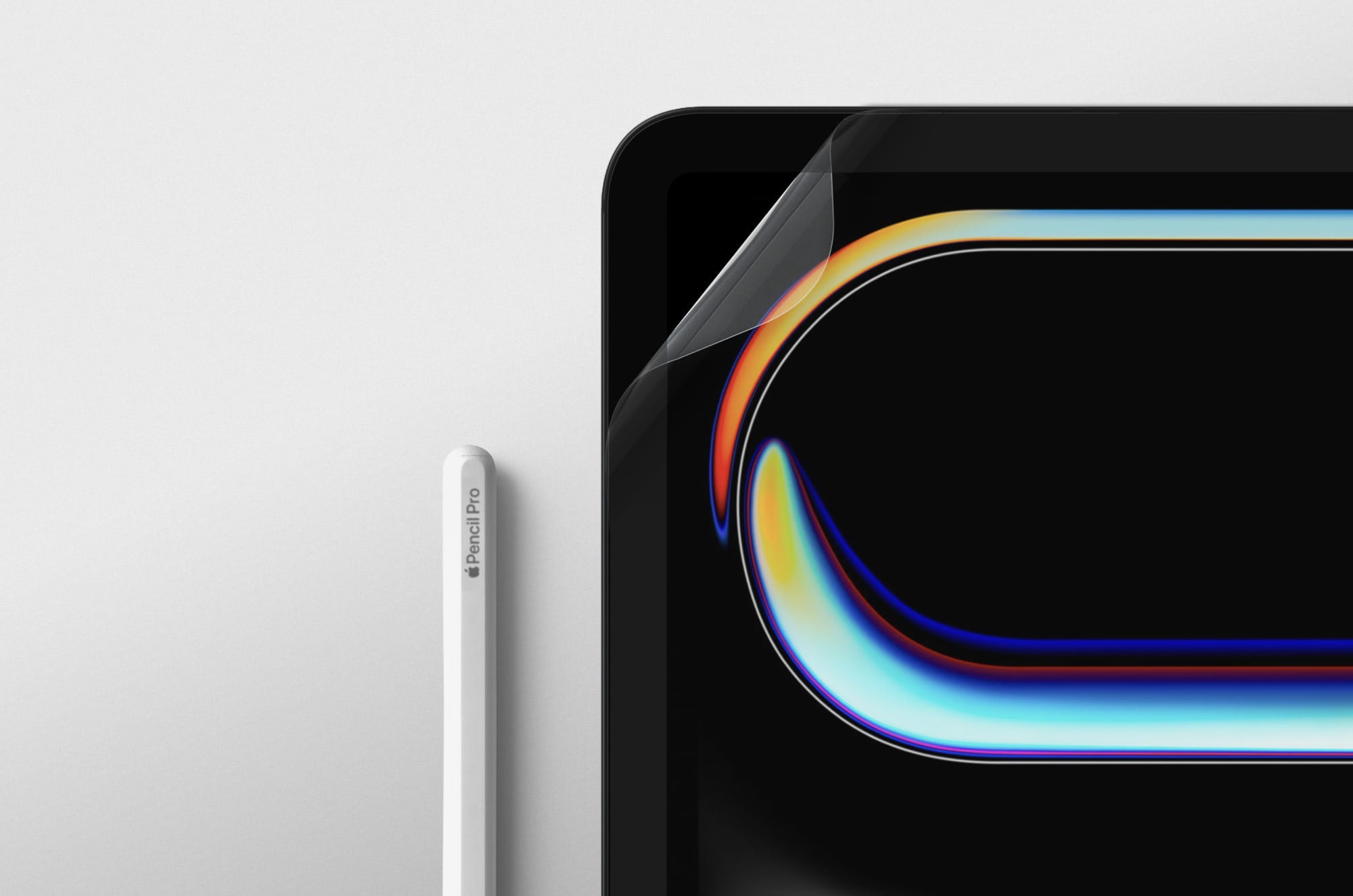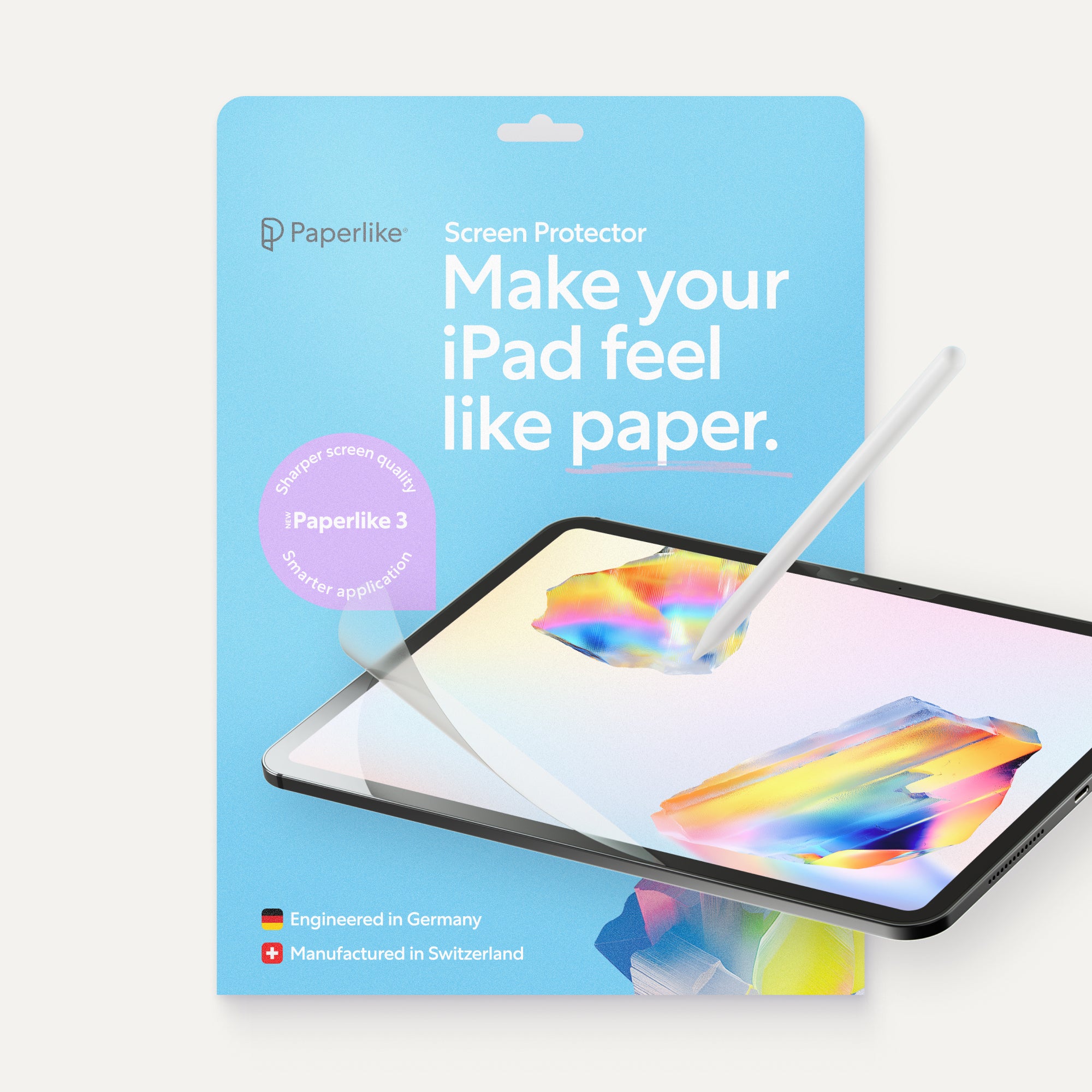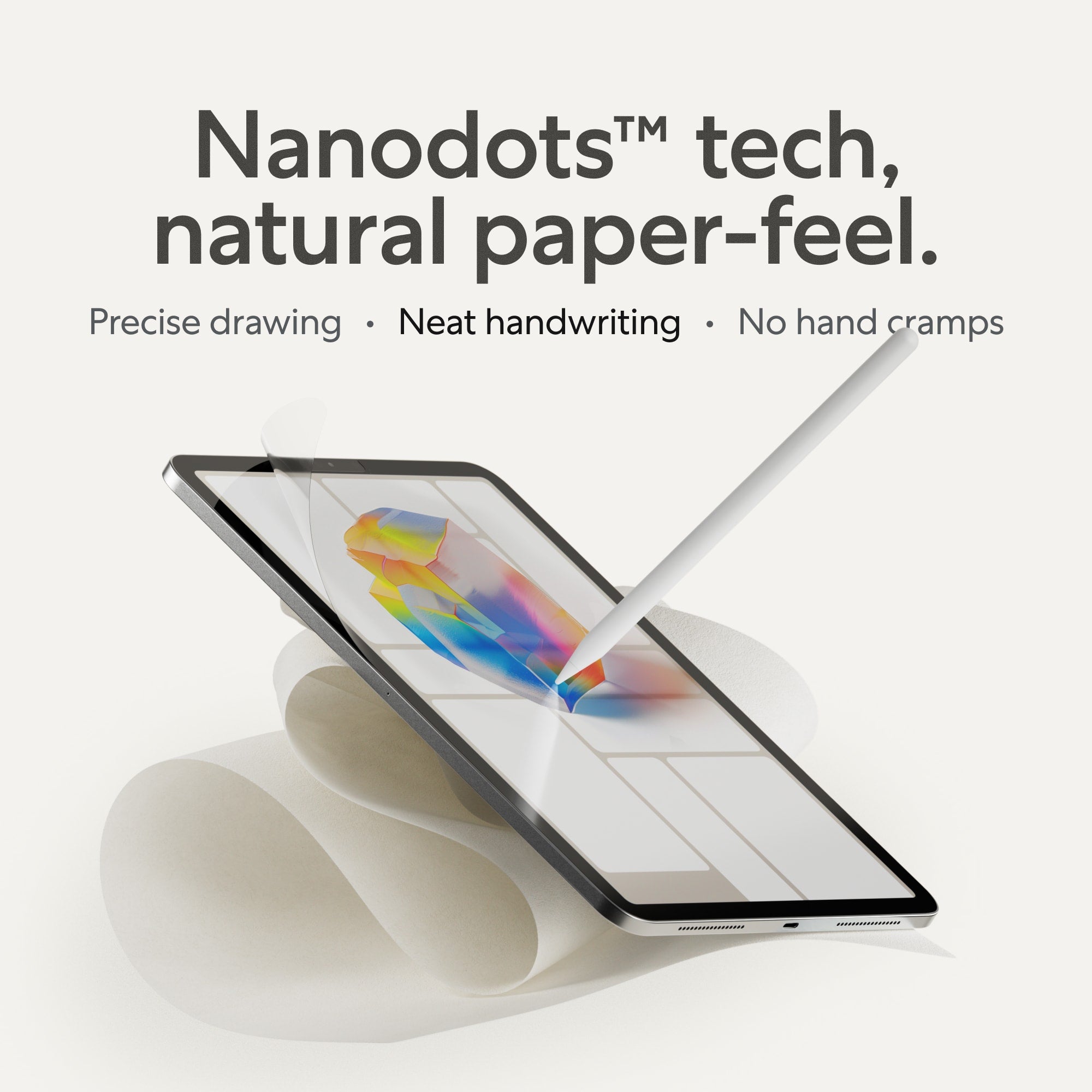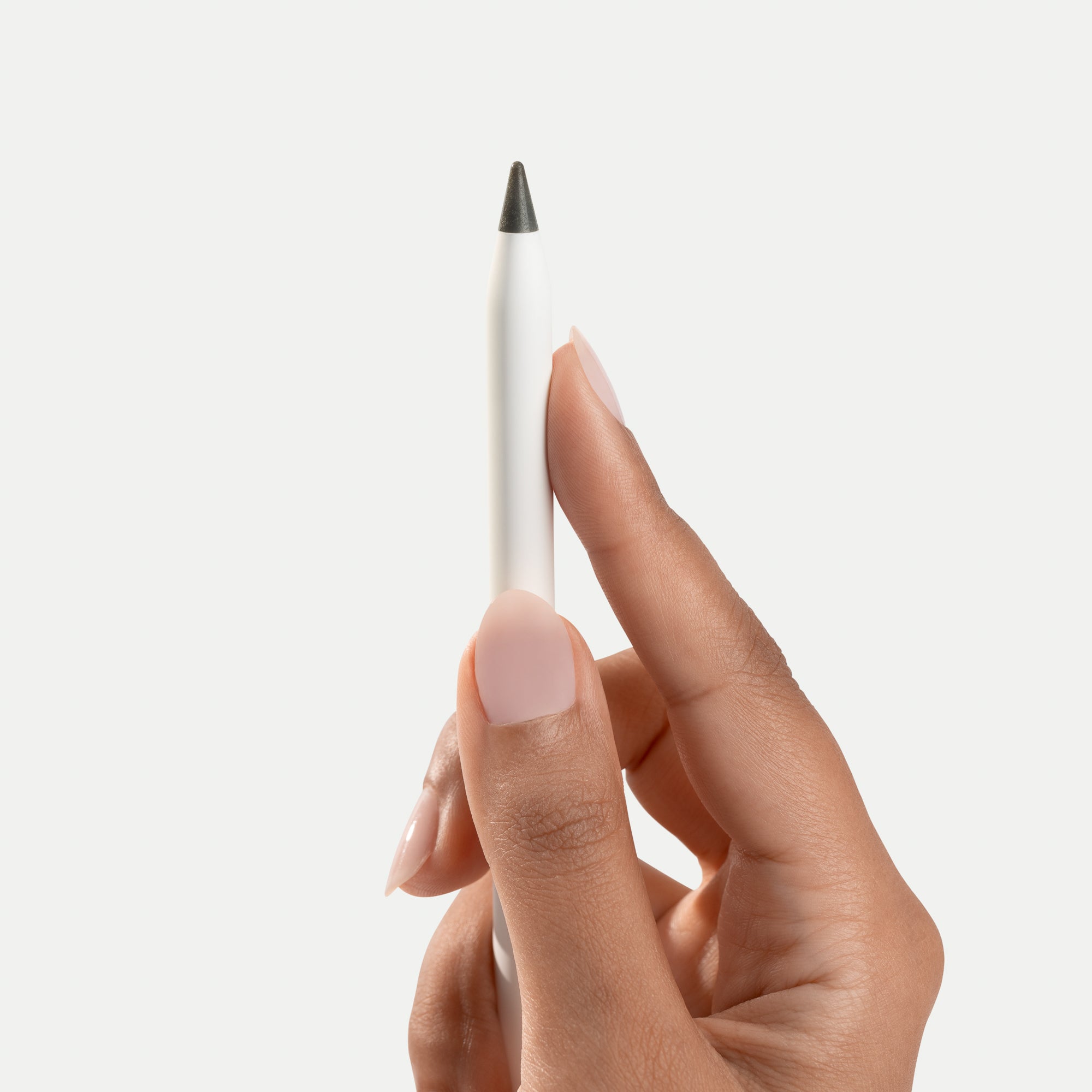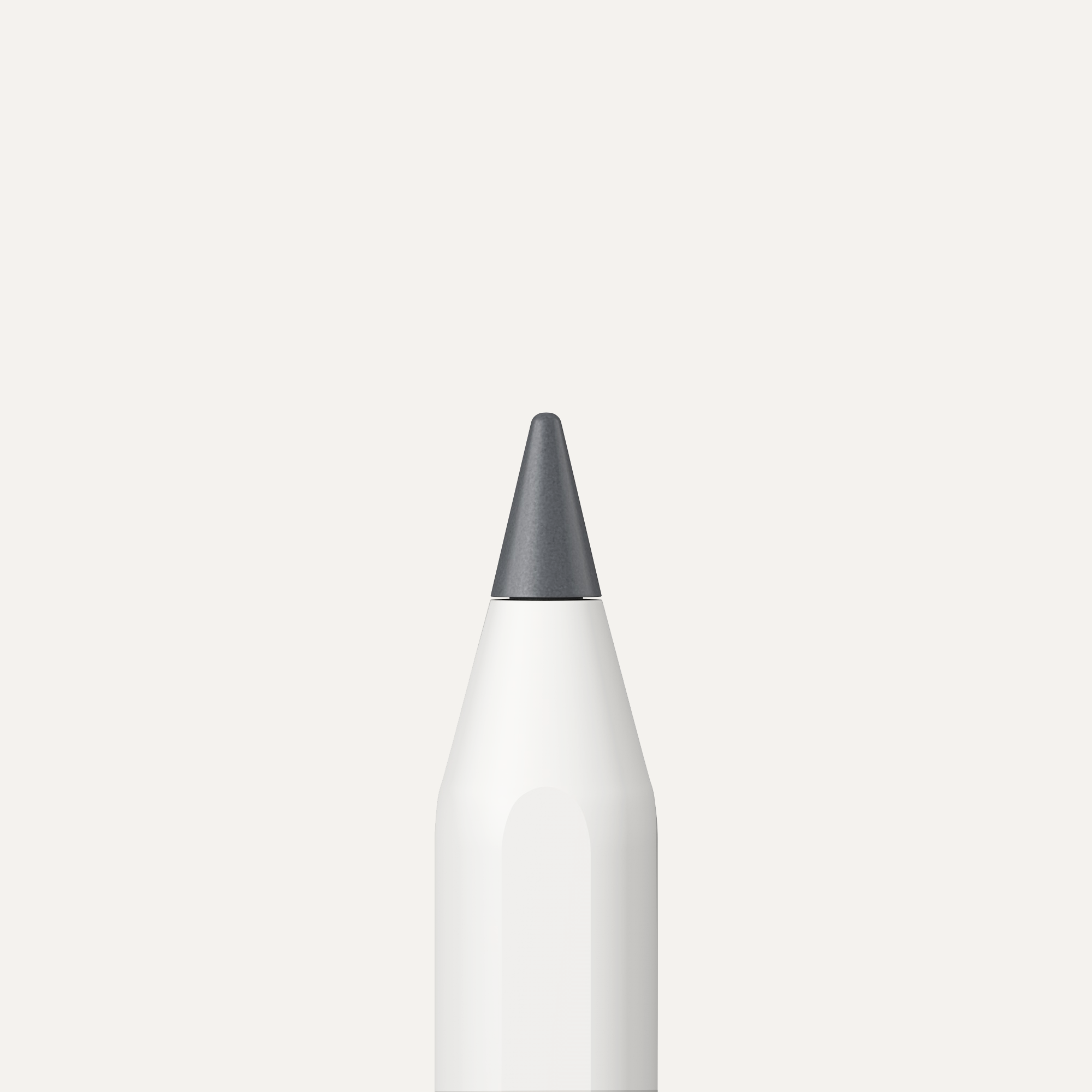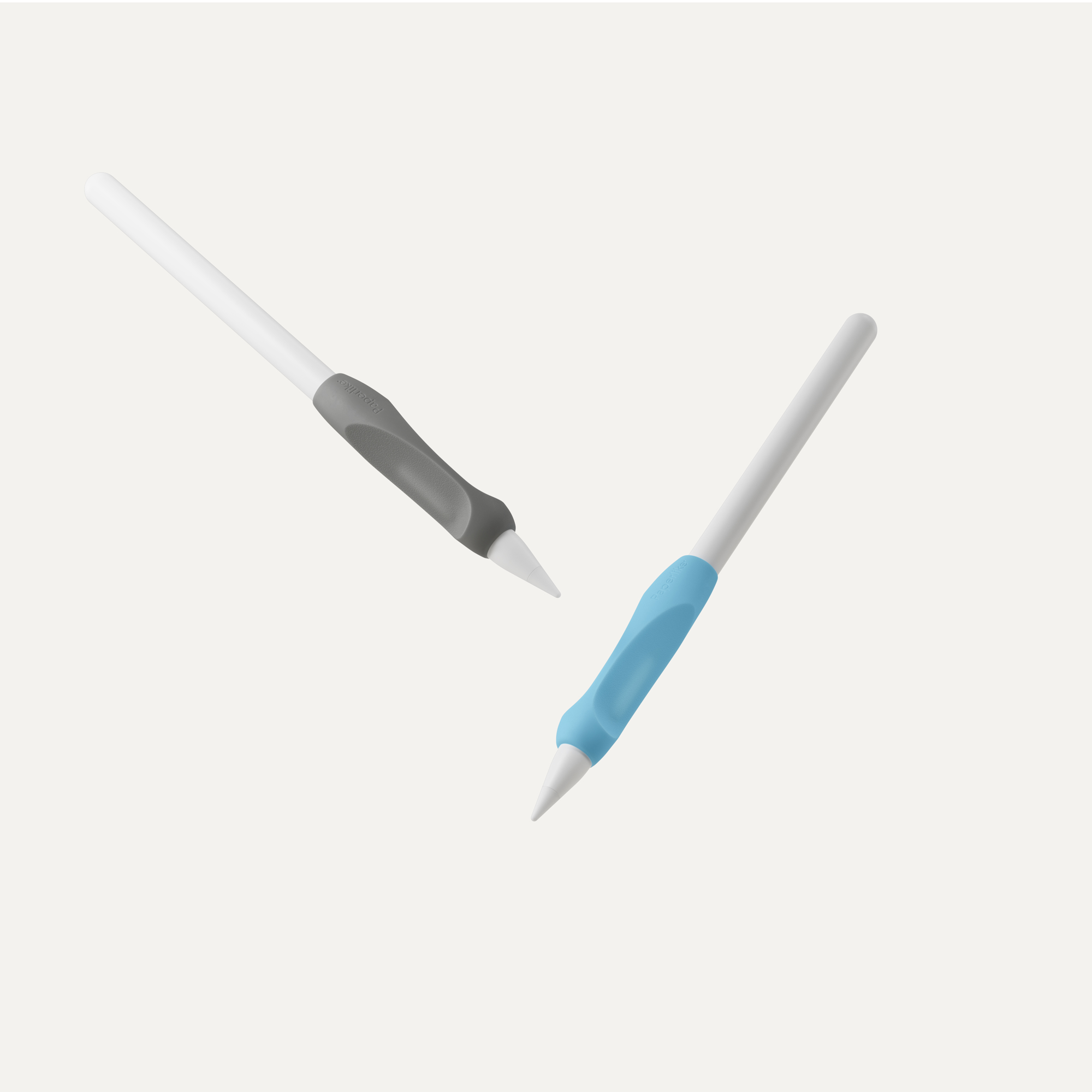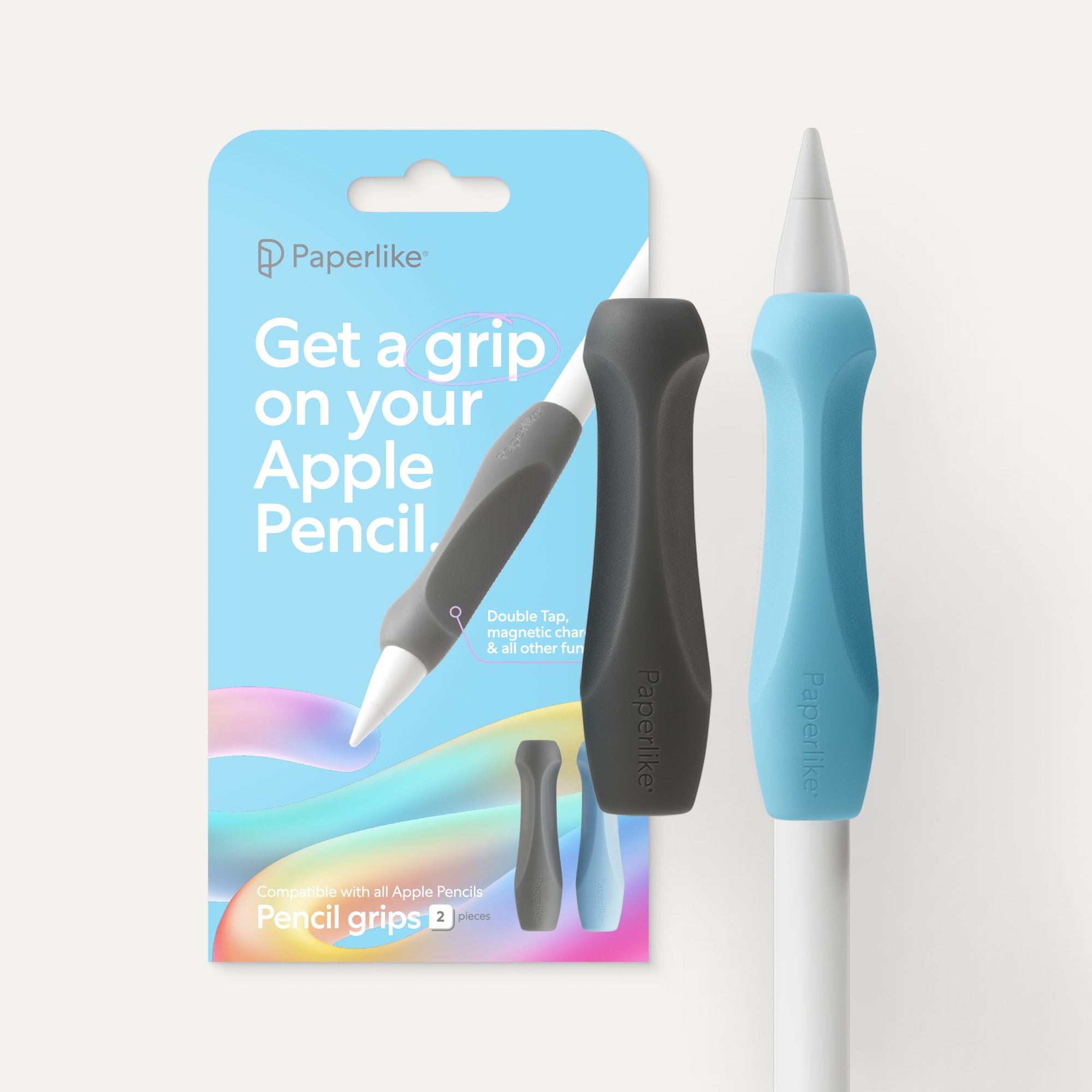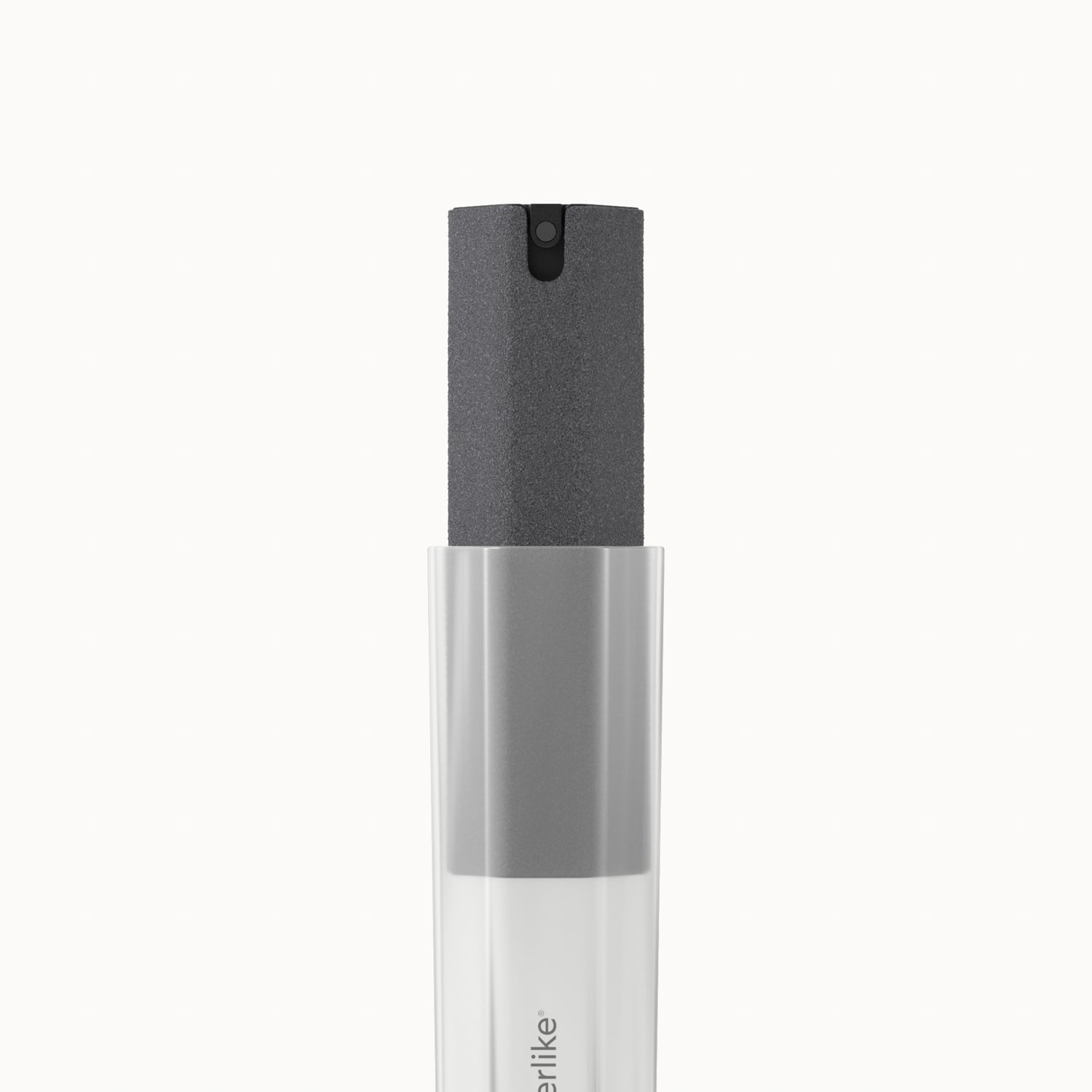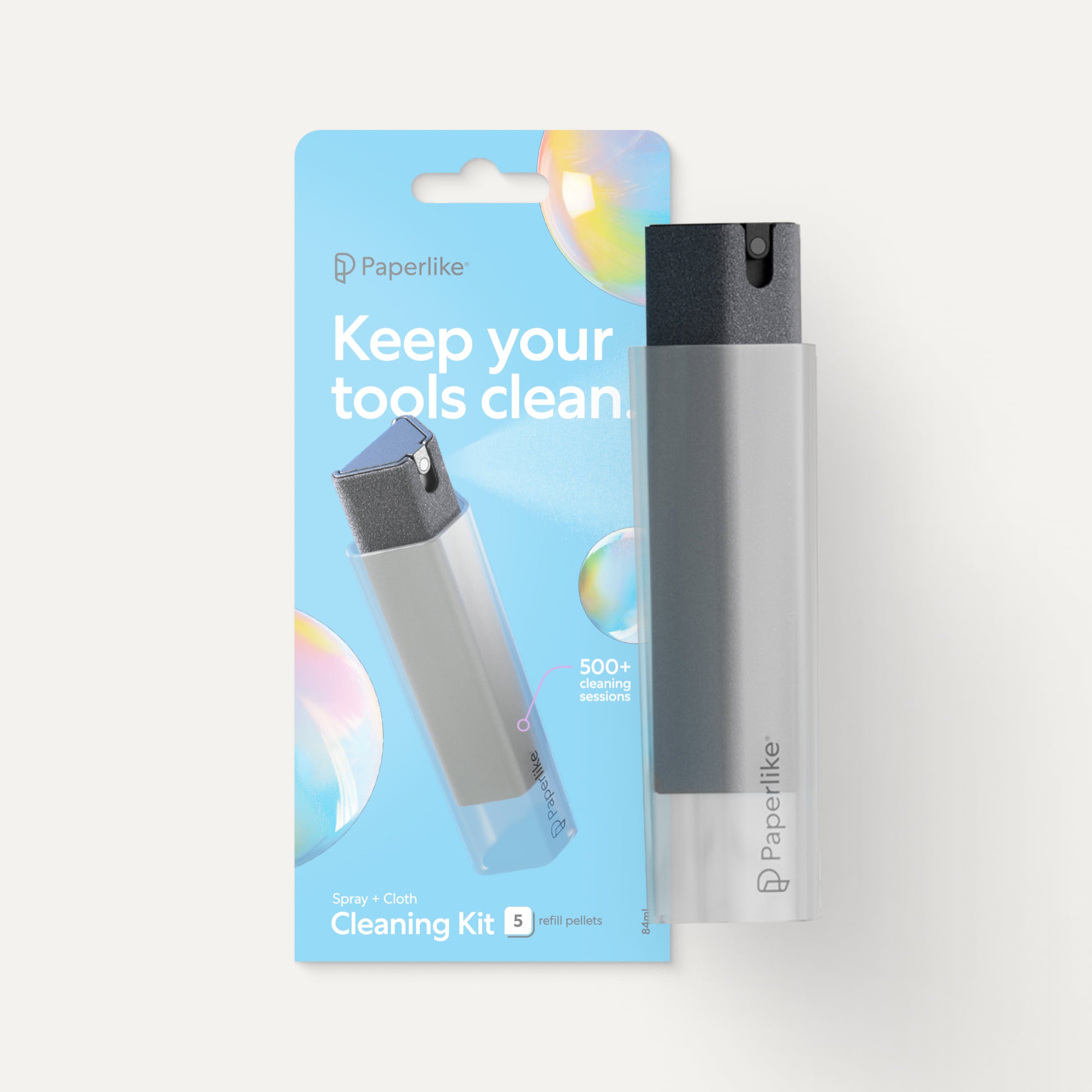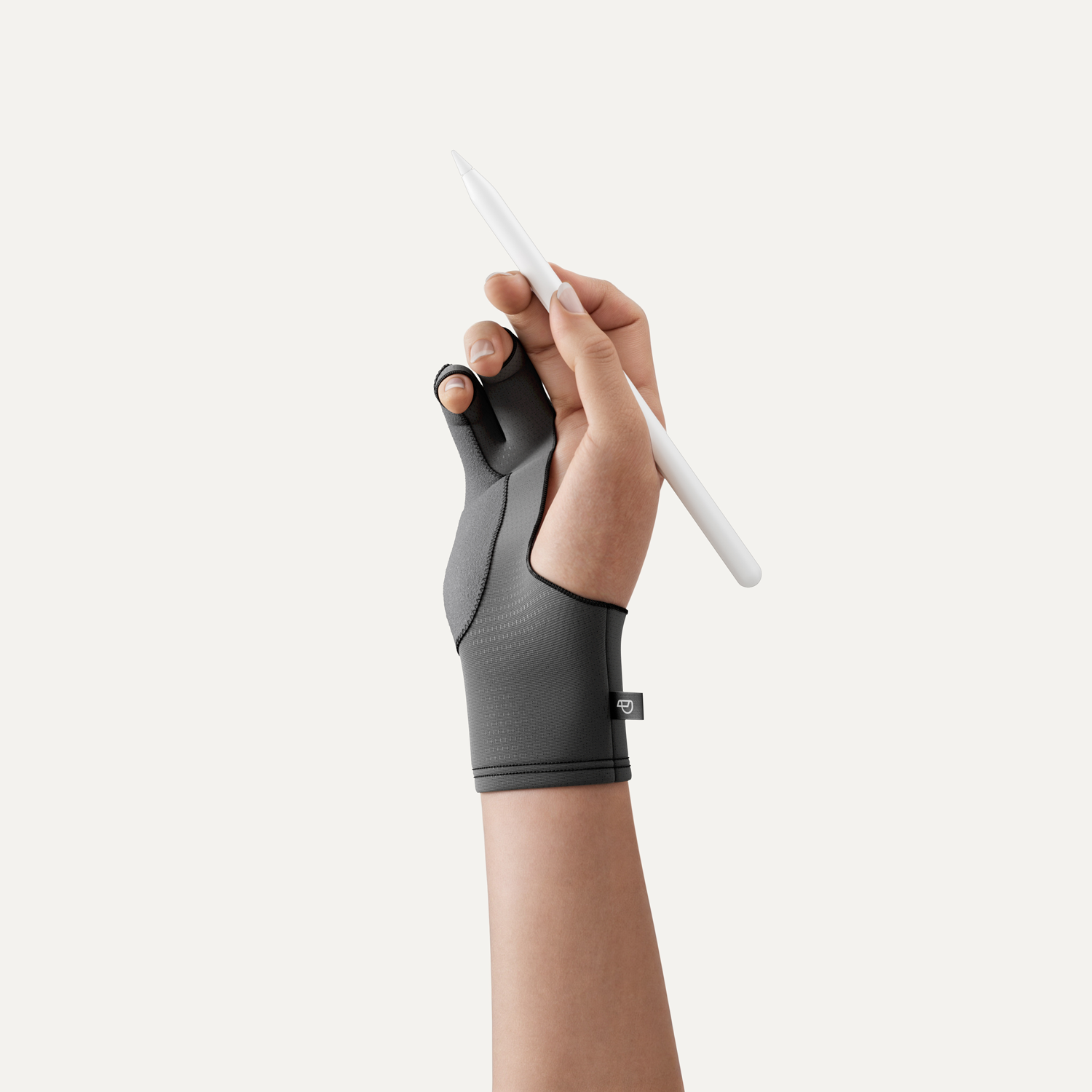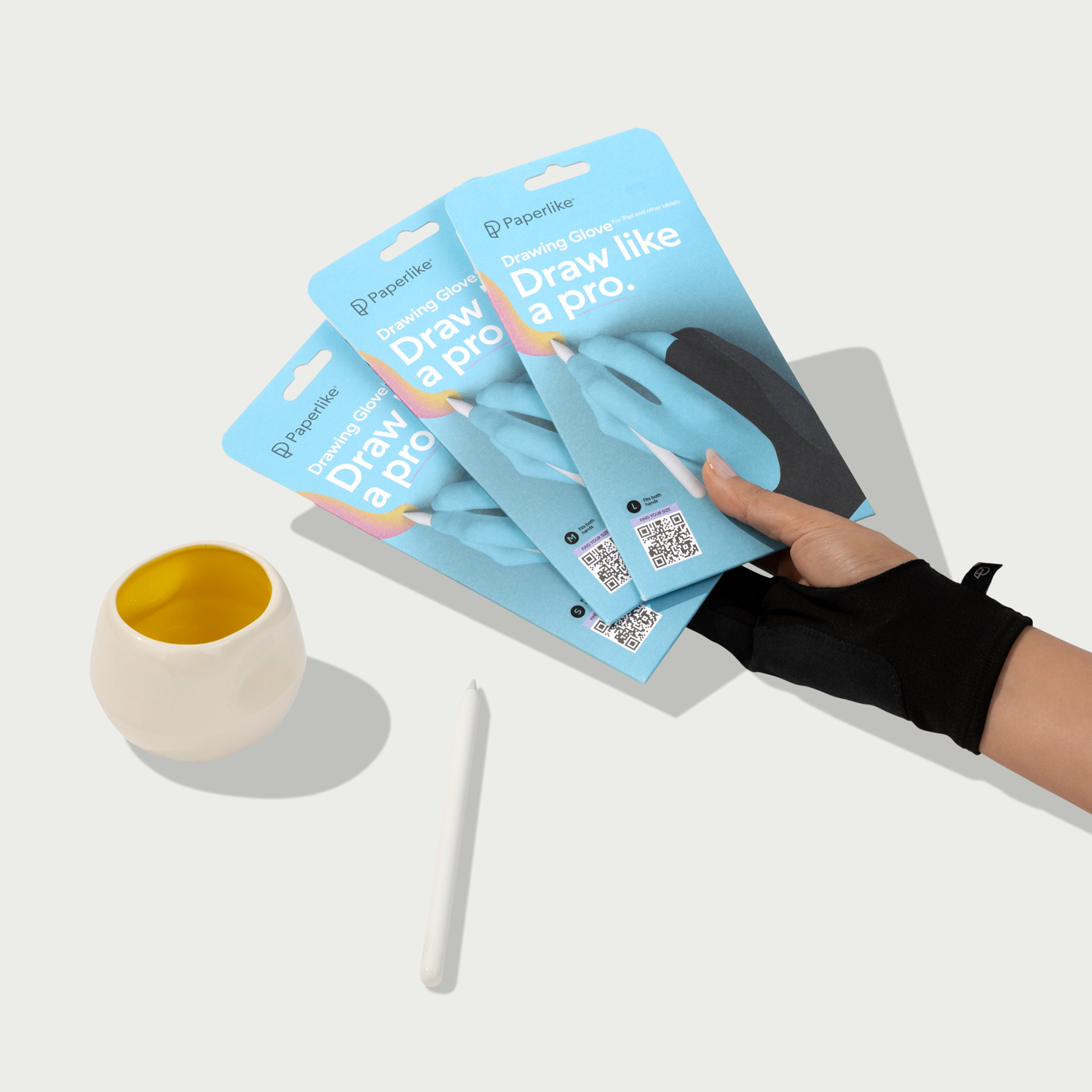This article was originally published in 2019 and was updated in June 2024.
Curious whether or not the Apple Pencil is worth buying?
Whether you’re a new iPad user or you’ve had one of Apple’s mobile tablets for years, you’ve probably heard about the Apple Pencil.
Since its first release in 2015, Apple’s high-tech, low-profile input device has changed the way iPad users interact with their favorite apps.
Apple has gone out of its way to make sure that the Apple Pencil is more than just another iPad stylus.
But do the benefits really justify the price tag? Is the Apple Pencil worth buying, or is it just a fancy finger replacement for Apple fans?
In this guide, we’ll help you cover the basics of the Apple Pencil and whether it’s worth buying for your specific needs.

Apple Pencil: The basics
Before we talk about who uses the Apple Pencil, let’s cover the basics.
In short, the Apple Pencil is a touch-sensitive, precision selection tool that functions as a replacement for tapping the screen when used with a compatible iPad. Because it’s the size of an actual pencil — something everyone is familiar with — it fits easily in the hand and feels intuitive to use.
There are currently four versions of the Apple Pencil:
- Apple Pencil (1st generation): This was the model that started it all: The original Apple Pencil. The first generation of the Apple Pencil was released in 2015 and is compatible with older iPad models. You’ll need to plug the device into the Lightning port on your iPad to charge it.
- Apple Pencil (USB-C): This Apple Pencil is a nice budget option for those who don’t need all the bells and whistles. It sports the same material and shape (although it’s slightly shorter) as the 2nd generation. While it does offer magnetic attachment, it must be charged using a USB-C cable. It also lacks pressure sensitivity, which is vital for artists and creators.
- Apple Pencil (2nd generation): The second-generation Apple Pencil boasts a sleek matte finish, improved sturdiness, and added some great new features (more on this below). It also has a flat side to prevent rolling and attaches magnetically to the iPad for charging. This is convenient, but users should be cautious as it can be easily knocked off, and not all cases leave room for attachment.
- Apple Pencil Pro: The most recent iteration, this Apple Pencil provides everything the 2nd generation does, but with even more advanced features to help bring your ideas to life (more on this below).
Let’s take a closer look at the key features of each.
|
Key Features |
Apple Pencil Pro |
Apple Pencil (2nd generation) |
Apple Pencil (USB-C) |
Apple Pencil (1st generation) |
|
Tilt sensitivity |
✓ |
✓ |
✓ |
✓ |
|
Pressure sensitivity |
✓ |
✓ |
✕ |
✓ |
|
No lag during use |
✓ |
✓ |
✓ |
✓ |
|
Change tools with the double-tap gesture. |
✓ |
✓ |
✕ |
✕ |
|
Squeeze to change colors, line width, etc. |
✓ |
✕ |
✕ |
✕ |
|
Change the orientation of brush tools by rolling the barrel. |
✓ |
✕ |
✕ |
✕ |
|
Magnetic attachment. |
✓ |
✓ |
✓ |
✕ |
|
Wireless charging and pairing. |
✓ |
✓ |
✕ |
✕ |
|
Works simultaneously with other iPad accessories. |
✓ |
✓ |
✓ |
✓ |
|
Compatible with a screen protector |
✓ |
✓ |
✓ |
✓ |
|
Doesn’t require a battery pack |
✓ |
✓ |
✓ |
✓ |
|
Completes software updates while charging. |
✓ |
✓ |
✓ |
✓ |
|
Contains no moving parts within the casing. |
✓ |
✓ |
✓ |
✓ |
Each Apple Pencil offers a slightly different use case, so take some time to evaluate which features are necessary for your needs.
Understanding the compatibility between your iPad and the various versions of the Apple Pencil is also crucial. With multiple iPad models and numerous iterations of each, it's essential to verify that the Apple Pencil you choose will work with your device before making a purchase.
Here’s a quick reference that you can use to determine which model is right for you.
|
iPad Model Compatibility |
Apple Pencil Pro |
Apple Pencil (2nd generation) |
Apple Pencil (USB-C) |
Apple Pencil (1st generation) |
|
iPad Pro 13-inch (M4) |
✓ |
✕ |
✓ |
✕ |
|
iPad Pro 12.9-inch (3rd, 4th, 5th, or 6th generation) |
✕ |
✓ |
✓ |
✕ |
|
iPad Pro 12.9-inch (1st and 2nd generation) |
✕ |
✕ |
✕ |
✓ |
|
iPad Pro 11-inch (M4) |
✓ |
✕ |
✓ |
✕ |
|
iPad Pro 11-inch (1st, 2nd, 3rd, or 4th generation) |
✕ |
✓ |
✓ |
✕ |
|
iPad Pro 10.5-inch |
✕ |
✕ |
✕ |
✓ |
|
iPad Pro 9.7-inch |
✕ |
✕ |
✕ |
✓ |
|
iPad Air 13-inch (M2) |
✓ |
✕ |
✓ |
✕ |
|
iPad Air 11-inch (M2) |
✓ |
✕ |
✓ |
✕ |
|
iPad Air (4th or 5th generation) |
✕ |
✓ |
✓ |
✕ |
|
iPad Air (3rd generation) |
✕ |
✕ |
✕ |
✓ |
|
iPad mini (6th generation) |
✕ |
✓ |
✓ |
✕ |
|
iPad mini (5th generation) |
✕ |
✕ |
✕ |
✓ |
|
iPad (10th generation) |
✕ |
✕ |
✓ |
✓* |
|
iPad (6th, 7th, 8th and 9th generation) |
✕ |
✕ |
✕ |
✓ |
*You need the USB-C to Apple Pencil Adapter to pair and charge Apple Pencil (1st generation) with iPad (10th generation).

Major benefits
Going beyond the technical details, the Apple Pencil offers a few major advantages over your fingers when it comes to interacting with your iPad.

Improved versatility
Hands and fingers are great for a lot of things, but they’re clumsy and awkward when compared to the precision that we get from using specialized tools.
And we’re not just talking about the Apple Pencil! That’s true for any tool — stylus or otherwise.
With the Apple Pencil, you’ll have finer-grained control over your hand movements. This allows you to use your iPad in new and exciting ways, from writing and journaling all the way to drawing and digital design.
Protip: You can add even more versatility and control when using your Apple Pencil by picking up a Paperlike. Our Screen Protectors emulate the feel of paper. Combined with the Apple Pencil, drawing and writing on your iPad feels just like working in a sketchbook or physical notebook.

Pressure & tilt sensitivity
Another major advantage of the Apple Pencil comes down to sensitivity when touching the stylus to your screen.
Teardowns of Apple Pencil units have shown that the device isn’t capacitive — meaning that it doesn’t conduct a charge through the screen like your finger does when you touch the iPad. Instead, the Apple Pencil uses emitters to determine angle, tilt sensitivity, and applied pressure.
(Keep in mind that the Apple Pencil USB-C doesn’t offer pressure sensitivity, only tilt sensitivity.)
That’s a major difference from what you’ll see in third-party styluses for Android and iPad devices, which may only provide limited pressure sensitivity — if they even offer it at all.
Because the tip of the Apple Pencil understands how hard or soft you press against the screen, it’s possible for iPad users to create everything from handwritten text to incredible digital artwork without any other specialized tool.
What’s more: Many app developers have also discovered how to take advantage of these unique features.
- With creative apps like Procreate or Adobe Fresco (comparison here), artists can adjust the size, texture, and consistency of the brushes and erasers they use to paint and draw. The Apple Pencil Pro makes these adjustments even easier with the squeeze and the double tap features.
- Notetakers using Goodnotes 6 or Notability (comparison here) can emphasize key points in their notes by pressing down harder while using the fountain pen tool.
While Apple hasn’t revealed any pressure sensitivity levels for the Apple Pencil, the stylus is diverse enough that professional artists are able to create incredible works of digital art without resorting to specialized equipment like Wacom tablets or expensive desktops.

Who uses the Apple Pencil?
Without a doubt, there are a ton of uses for the Apple Pencil, and many consider it to be a must-have Apple product and the best stylus on the market.
While it might not seem like a fit for the everyday user at first glance, the Apple Pencil is a nifty little gadget when placed in the right hands.
So, who thinks the Apple Pencil is worth buying? Let’s take a look at some specific use cases to find out.

Artists
The Apple Pencil gives artists almost everything they need to sketch, draw, and colorize artwork on their iPads. This is because it supports technologies like palm rejection and pressure sensitivity, both of which are fundamental to most digital artists.
Combine that with an active imagination and a few powerful artistic apps like Procreate, Affinity Photo, or Photoshop for iPad, and you’ve got everything you need to start creating amazing digital art.
You can even grab Paperlike’s Screen Protector to make the surface of the iPad feel like real paper.
This combination of hardware and software makes your Apple devices powerful enough to compete with dedicated drawing tools like the Wacom Cintiq. The iPad apps, combined with features built into the iPadOS software, save Apple users from a hefty investment into specialized hardware.
After all, why purchase a dedicated art device when the iPad can get the job done at no additional charge?
That’s especially true when you use the macOS Sidecar feature to transform your iPad into a graphics tablet for your Macbook while still using the Apple Pencil as your primary stylus.
Preventing unnecessary investments for professional artists and allowing hobbyists to improve their craft by utilizing technology they already own makes the Apple Pencil a worthwhile purchase for millions of iPad users.

Students & teachers
Digital technology has a variety of uses in the classroom. It can help young students explore their creative side, stay organized, and learn using interactive tools.
For high school and college students, leveraging the iPad with notetaking apps like Evernote, Microsoft OneNote (comparison here!), or any of the other great notetaking apps in the App Store can help learners capture detailed, handwritten notes and organize their digital classwork.
Accessories like our own Paperlike for iPad can improve this experience further by helping students take neater and more precise notes.
But that’s only scratching the surface of what the Apple Pencil can do for students. Many modern educational apps use advanced technologies like augmented reality and cloud computing to provide unique educational opportunities while keeping students and teachers even better connected.
A great example of an app packing this tech is Froggipedia, which allows students to use the Apple Pencil as a scalpel to digitally dissect and explore the inner workings of frog anatomy, all through the view of the high-resolution retina display.
Taking a step in the opposite direction, apps like Showbie help teachers run a paperless classroom while the Apple Pencil allows them to mark up homework and grade quizzes without leafing through endless stacks of paper.
Thanks to creative app developers and their initiatives in education, the Apple Pencil is worth buying for teachers and students who want the best tools possible for an efficient and immersive classroom experience.

Musicians
Beginning pianists and professional musicians alike love the iPad for its ability to store sheet music and connect with modern electronic instruments like keyboards and guitars.
Plus, incredible apps like Simply Piano, Flowkey, and others make it easier than ever to learn a new instrument.
So, where does the Apple Pencil come in? Musicians find the Apple Pencil useful when annotating and marking up music. Any musician will tell you that writing the fingerings for a tricky chord or highlighting a change in time signature is a major help when committing those details to memory.
The Apple Pencil works in conjunction with sheet music apps like forScore to make annotations simple, easy, and convenient.
If you want to go even further, the Apple Pencil can play a key role in creating your own music. Apps like StaffPad allow you to create your own original sheet music! With the Apple Pencil, you’ll simply add your notations to an empty page, and StaffPad’s handwriting recognition will transform your marks into a professional-looking musical score.
For maximum flexibility, a Paperlike can make this process even better by replacing the iPad's slick, glassy surface with something that feels like real paper, allowing your strokes to stay quick and precise.
No matter where you are in your musical pursuits, the Apple Pencil rounds out the complete digital kit for musicians who want to ditch printing sheet music while still customizing a score to suit their unique personal style.

Business users
In many office environments, laptops are often seen as a distraction — to the point that some companies disallow laptops during meetings because workers can become preoccupied with their screens.
Used for notetaking (especially with an Apple Pencil and a Paperlike to round out the experience), the iPad can serve as a middle ground where notes can be made without obstructing the user’s line of sight.
Plus, the iPad’s lighter weight and enhanced mobility, coupled with the ability to connect to large monitors and display devices, make it an ideal candidate as a meeting presentation tool.
Where the Apple Pencil shines in a business situation actually has little to do with the technology itself and everything to do with managing the one thing that every business person hates to deal with: paperwork.
File digitization has become more popular, and the iPad boosts productivity in this area by giving users the tools they need to interact with documents that now exist in digital format.
Looking for a great example? Check out PDF Expert. Grab an Apple Pencil and open the app. Now, it’s easy to mark up, redesign, and digitally sign PDF documents on the fly, whether you’re meeting with business partners, negotiating with clients, or trying to get a little more work done while lounging in your favorite recliner at home.
You can even take your business in an entirely new direction. One of our Paperlike artists, Guillaume Wiatr, uses the Apple Pencil and iPad Pro to help business leaders better understand how to refine their messaging through a process known as “graphic facilitation.”
It’s just another innovation that makes the Apple Pencil worth the investment.

Apple Pencil accessories
The Apple Pencil is an amazing tool on its own, but there are also some great accessories that enhance its functionality, protect it from damage, and improve your overall experience.
- Pencil grips. Just like holding a regular pencil, working with the Apple Pencil can be tiring after a while. Exhaustion can lead to hand cramps and fatigue. Pencil grips can help to offset this problem. You’ll find several aftermarket options, but we’re partial to our own Paperlike’s Pencil Grips, which are designed for maximum comfort and precision while writing and drawing.
- Pencil cases. Think of pencil cases as a full-body sleeve for your Apple Pencil. There are plenty of options available from third-party manufacturers. Keep in mind that these cases may change the look, shape, and feel of your Apple Pencil.
- Replacement nibs. Sometimes, nibs break or get scuffed through regular use. If you’re worried about that, it can be useful to have some replacement nibs on hand. Apple sells a 4-pack through their online store, and there are some aftermarket options available. Take care with third-party options, however, as they may be made of different materials and could potentially damage your devices.
- Screen protectors. While this accessory is for your iPad, not your Apple Pencil, Paperlike’s Screen Protector adds friction and resistance to the surface of your device. When paired with the Apple Pencil, it makes it feel just like writing or drawing on paper.
- Drawing gloves. If you want the ultimate writing and drawing experience with your Apple Pencil, you can throw on Paperlike’s Drawing Glove. It cleans your screen while you work and prevents smudges and any accidental inputs.
You can find a wide variety on Amazon and in tech accessory shops, but make sure that what you pick up will not damage your device or prevent it from charging properly.
You can also check out these two blogs for more ideas:

FAQ
Do I really need an iPad stylus?
It depends.
Above, we covered some of the main use cases for the Apple Pencil based on profession and career choice. But what about the everyday user who just wants to play with their iPad after a long day on the job?
If that’s you, we have to ask: How do you feel about coloring?
Adult coloring books took off a few years ago, and the trend is stronger now than ever. Thanks to apps like Pigment for the Apple iPhone and iPad, it’s possible to color while on the go.
Outside of singular use cases where your favorite apps have really taken advantage of the technology, it’s impossible to say whether or not the Apple Pencil would be a great fit for you.
That’s one reason that we recommend looking around to see if the apps you use every day are made even better by the Apple Pencil.
At the end of the day, the Apple Pencil is designed to be a precision input and selection tool. It gives users the ability to more precisely touch, select, and interact with the surface of their iPad. This can help when you’re taking notes with the Apple Notes app or drawing with a program like Adobe Fresco or Procreate.
If you’re just browsing the internet and sending the occasional email, the Apple Pencil might not be for you — and that’s okay. There are dozens of other iPad accessories out there, from the Magic Keyboard to the AirPods Pro, that might be better suited to your needs.
Is the Apple Pencil the best iPad stylus?
Yes, and it comes down to how the iPad and Apple Pencil work together to provide accurate inputs.
When you draw on your iPad, the screen reacts to the electric charge that your body produces naturally. Many Apple Pencil alternatives use capacitive rubber to emulate this effect.
The Apple Pencil doesn’t do that. Instead, it uses a set of emitters to broadcast the precise position, tilt, and pressure of your Apple Pencil to your iPad.
This approach means that the Apple Pencil provides pixel-perfect information to your iPad in real time, and that information translates to better precision and performance for you.
The downside to this approach is that you need the right Apple Pencil for your device. The first-generation Apple Pencil doesn’t work across all iPad Pro models, for example.
Likewise, you won’t be able to use your Apple Pencil on other devices (like a Samsung Galaxy or a Microsoft tablet). It simply isn’t compatible in the way that a device using traditional, capacitive technology will be.

Is the Apple Pencil Worth Buying?
In short: Yes.
For what it does, the Apple Pencil is worth the investment.
While it might not be a great fit for every single user, we believe that the Apple Pencil is worth the investment for users who want to do more with their iPad. The enhanced precision and added versatility unlock device features in ways that just aren’t accessible without it.
In our view, the Apple Pencil turns the iPad from a luxury multimedia device into a robust productivity and learning tool. It empowers users to explore technology in new and exciting ways, and that’s something we support.
And don’t forget! You can make your iPad screen feel like real paper with Paperlike’s Screen Protector and improve your writing and drawing experience with a set of Paperlike’s Pencil Grips.


